Climate Action Starts Within
In this four-piece series, A Practitioner’s Journey To Living With Climate Change, we have explored different ways to listen: listening to science, listening inside of us, and listening beyond the human, to the natural world. We have considered the many ways one can start a climate conversation: it can be about the gut microbiome, conscious influence or cosmology, to name just a few. The last article was a personal account of my experience witnessing a climate-related disaster. It makes sense to complete this series with a discussion about what to do.
In this four-piece series, A Practitioner’s Journey To Living With Climate Change, we have explored different ways to listen: listening to science, listening inside of us, and listening beyond the human, to the natural world. We have considered the many ways one can start a climate conversation: it can be about the gut microbiome, conscious influence or cosmology, to name just a few. The last article was a personal account of my experience witnessing a climate-related disaster. It makes sense to complete this series with a discussion about what to do.
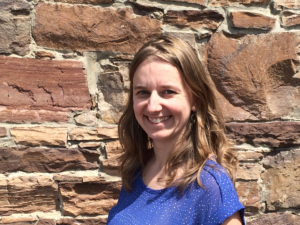
Alex Arnold (she/her) MSPsy, MSHR/ OD, ACC, is Executive Consultant for The Taos Institute and a climate resilience coach at Alma Coaching, where she uses positive psychology and Appreciative Inquiry to help introverted and highly sensitive people shift from climate anxiety to inspired action.
The timing of this publication is aligned with the 2023 AI Jam (October 19–21), the virtual conference hosted by the Cooperrider Center for Appreciative Inquiry. I had the honor of participating in a panel discussion on the topic: AI for Life: Putting Life-Centric Practices at the Heart of All We Do, A Dynamic Dialogue with Global AI Practitioners, in which I spoke about coaching as a tool to manage climate anxiety, build climate resilience and take inspired action. A question the panelists were asked was: “How do you see the work you are doing as a manifestation of the principles of Appreciative Inquiry?”
Rather than listing specific climate actions, let’s look at the core principles of Appreciative Inquiry and how they can guide us, as individuals, and as practitioners with our clients.
The Constructionist principle
Words create worlds. The topic of climate change is often associated with conflict, with others or within ourselves. It doesn’t have to be that way. When we open up to different stories, perspectives and conversations, we can create different realities. When we accept that there isn’t one Truth, and that our local truths are the outcome of our unique life trajectories, we can approach climate conversations with curiosity, care and respect. We can inquire into another person’s worldview without feeling the need to judge or convince. Connecting with others over shared life experiences, interests or values will have a much more positive impact than any scientific data we can share. How do we have conversations that connect or inspire rather than divide or deflate?
This principle also invites us to reconsider the language we use around climate. (For more on the power of appreciative language, check out my co-panelist Claudia Gross’ book: Speak Green). What might happen if we replace statements like “We need to fight the climate crisis before it’s too late” or “We’re headed toward an apocalypse” with questions like “How might we learn to live differently in response to the changing climate so that people and the planet can thrive?” Or “What is the latest innovation, story of resilience or flourishing you’ve heard about?” We talk about the latest climate news story or comment on the unusual weather pattern in mundane small talk every day. Let’s slow down to consider the impact our word or story choices have. The language we use in conversations around climate shapes our future.
The Simultaneity principle
Change begins the moment we ask a question. One common experience in response to climate change is to feel powerless. We are stuck because we feel too small or inadequate to make a difference. Asking appreciative questions that bring out the best in people reminds them that they are skilful, capable, that they have resources, influence and control (at least over some things). Inquiring about past successes or peak experiences, even those not related to climate, can help people regain agency. They can start imagining how their skills can be applied in different ways. It also helps them clarify what really matters to them. Indeed, many people are overwhelmed because they don’t know where to start or what to do. We hear that we need to change our diets, electrify our homes, switch cars, move our investments, replace our wardrobes, vote, get involved politically or with environmental organizations and more. It’s just too much and we can’t do it all.
Knowing one’s personal values can be hugely helpful in choosing a direction for action. One question that is sometimes used in climate coaching conversations is to ask the client to remember a movie, a book, a superhero, a cartoon character or a role model that the client admired as a child. When we inquire deeper into what this person/character/story stood for, we discover topics or causes that the person might feel really passionate about that they may have forgotten. This could lead someone to narrow their focus to social justice, or protecting a certain species or habitat – or maybe the food industry will call them most. A different way questions can be powerful, for example with someone being impacted by weather-related events, is to ask them about something they are grateful for, something they have learned, something that surprised them, or what helped them cope with the situation, instead of focussing only the distressing aspects. Use these questions thoughtfully and without dismissing the gravity of the situation, of course.
The Poetic principle
What we focus on grows, or what we appreciate appreciates. If all of our attention is on stories of apocalypse, doomsday, extinction, countdown, catastrophe, disaster and suffering, that is the world that we will be living in. But if we focus on stories of hope, innovation, resilience and thriving, we start to notice more and more of them. This creates a positive spiral, until we are surrounded by solution-focused news rather than what seems like insurmountable problems. One of the simplest things you can do right now is to subscribe to a source of positive news and limit or even stop taking in any traditional news. The impact on our emotional state is significant. By being mindful about what we pay attention to, we can balance despair, anger, sadness and hopelessness with hope, curiosity, interest, optimism, admiration or awe. This is not a linear process or a quick fix. These are coping strategies; they are not meant to replace, end or fix climate anxiety altogether. In fact, experiencing climate distress is not a problem we want to solve: it is what makes us human and what connects us all. We hurt where we care.
The Anticipatory principle
Images inspire action. According to this principle, we move in the direction of our vision of the future. What images come to mind when we think of climate change? Most of us only see images of destruction, suffering or death. Can we imagine a bright future for people, animals, ecosystems and all living things when we are taking in so many visuals of desolation and loss? To regain our ability to dream, let’s look at images of beauty, abundance, lush environments, thriving communities – human and non-human. Even looking at images of technological innovation like models of green cities or 3D-printed, eco-friendly, affordable houses can help create a positive vision of what we want to move toward. On a smaller scale, we can practice daily visualizations of small goals, rather than being lost in a blurry picture not knowing where we fit in. How about dreaming of a delicious vegetarian dinner, or imagining shopping at a local store, meeting the owner or the maker of the item you’re purchasing, instead of placing an Amazon order? How vivid an image can you get of the rich, fragrant soil you will harvest from your compost? What is one tiny thing you can see yourself doing to green-up your house today? Visualization can be applied to conversations: how can you prepare for a different exchange when the inevitable topic of the latest weather oddity or disaster comes up today? What we believe is possible will determine what is.
The Positive principle
Positive images lead to positive action. There are many stereotypes associated with climate action: radical activism, confrontational conversations, public and sometimes violent protests, political involvement, extreme lifestyle changes like giving up meat, air travel, or switching cars: “I should be doing X.” Whatever we are doing, it seems that it’s not enough, or not the right thing. These actions are all great and necessary, but they are not useful if they are such a stretch that we are paralyzed instead. Unfortunately, self-judgment and societal pressure only exacerbate climate distress.
What would happen if we gave ourselves permission to choose the type of climate action that brings out our best selves? No matter our skills, they are needed. When we build on our positive core, climate action becomes effortless, inspiring; it generates positive emotions that have physical and mental health benefits, and it can even be fun! Jane Goodall says that “whatever you do, do it out of love, not out of guilt”.
If you love to write, try writing social media posts or a blog, an article, or a newsletter story on a topic you’re passionate about, directly or indirectly related to climate. If waste and pollution are topics that make your blood boil, consider how you might use your passion to model or educate others on Reducing- Reusing-Recycling-Refusing practices or on circular economies (the topic discussed by my second co-panelist, Tojo Thatchenkery, author of Appreciative Intelligence: Seeing the Mighty Oak in the Acorn, who with two colleagues, developed the Appreciative Intelligence instrument).
If you’re a more private type, climate action can start by being more present next time you go to the grocery store and, rather than filling your cart on autopilot, experimenting with different items – for example, pick the peanut butter in a glass jar instead of a plastic one. You’ll be surprised how different your fridge and your pantry will look in a few months.
If you’re a foodie, have fun experimenting with new vegetarian recipes and local, organic and sustainably produced ingredients – and tell your friends about it. Climate action no longer requires us to be loud, extroverted, risk-takers, angry or radical. Living in alignment with our natural world can be a life-giving display of strengths.
Action starts within
Using life-giving language and asking generative questions about climate change, visualizing the thriving world we want to live in, appreciating climate solutions that already exist and honoring our positive core as our best form of climate action are all tools that AI offers to build climate resilience. With all of these suggestions, let’s remember to ask, “what is the tiniest step you can take right now?” We are not looking for final solutions or big changes all at once. Climate resilience is not about getting rid of our difficult emotions to jump into action. It is about developing coping skills, new mindsets and shifting lifestyles the same way we would to manage a chronic illness. It’s about experimenting, learning, adjusting and being self-compassionate in the process. Climate action starts within.
Intro by Keith Storace
In her four-part series “A Practitioner’s Journey to Living with Climate Change”, Alex Arnold has advocated for a transformative approach to climate resilience and action grounded in the principles of Appreciative Inquiry. She has emphasised the significance of positive language, values-driven questioning, hopeful focus, and aligning actions with personal strengths as tools to build climate resilience and inspire change from within. Alex’s final article in this series, “Climate Action Starts Within”, focuses on the five core principles of Appreciative Inquiry, emphasising that positive conversations about climate change can foster hope and inspire action. I would like to thank Alex for her depth of knowledge and the inspirational outlook she has shared throughout this valuable and timely series!
Also, in this issue of AI Practitioner, Dr Nick Heap presents his work and focus on “Naturalising Appreciative Inquiry” where he emphasises that, by shifting our perspective towards positive interactions and shared experiences, we can foster deeper human connections and inspire hope. Contemplating key questions and sharing uplifting stories, such as moments of happiness, can help bridge cultural or organisational divides. Simple daily practices, like acknowledging a smile, can be a step towards embedding AI into our daily lives, cultivating a world with more love, understanding and cooperation.
It is my pleasure to present Alex Arnold and Dr Nick Heap and their insightful work!



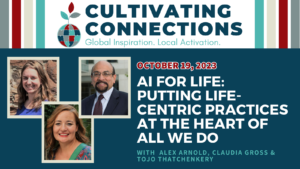
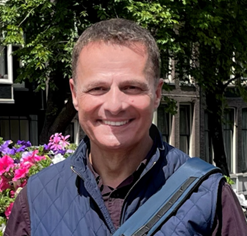
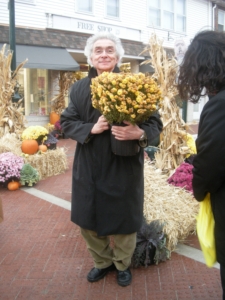 Architect, family therapist, musician, bathed in Italian, French, and American culture, and passionate about social constructionism, Alain has graciously offered the French-speaking public the translation of many books by Kenneth Gergen, as well as many other authors.
Architect, family therapist, musician, bathed in Italian, French, and American culture, and passionate about social constructionism, Alain has graciously offered the French-speaking public the translation of many books by Kenneth Gergen, as well as many other authors.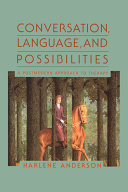
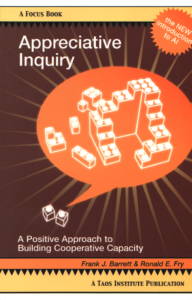
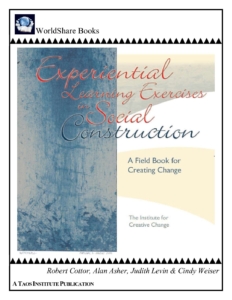
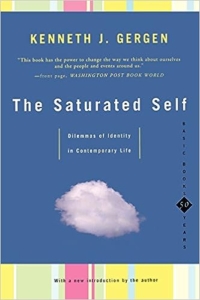
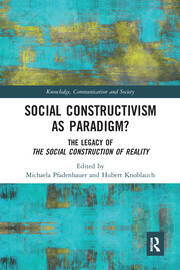
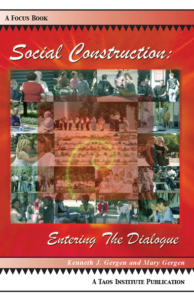
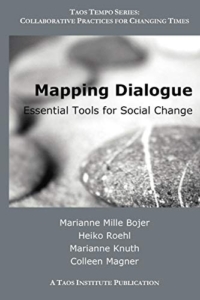
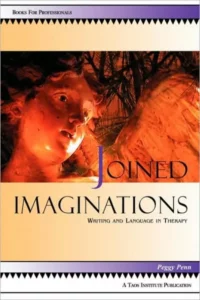
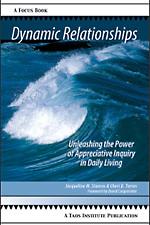
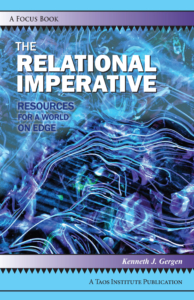
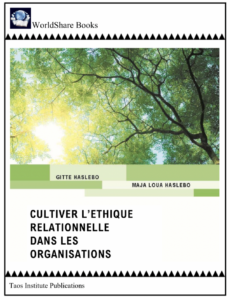
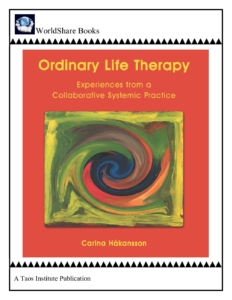

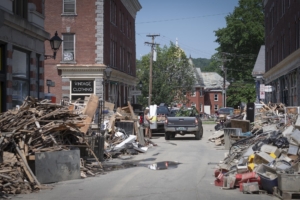
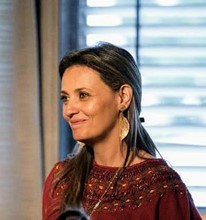
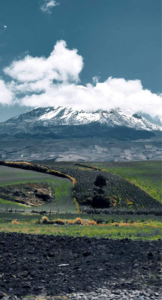 Once I started to understand more about it, I realised how valuable it would be even to our own company and all agreed I should undertake training. I was lucky to find immediately a course at one of the finest universities in Latin America, the Adolfo Ibañez University in Chile, where I attended “Fundamentals of Appreciative Inquiry”. I’m grateful to the universe that the one I found was the best for me and close to home. Feeling as if I was back in school on that first day, I listened: the words made sense and resonated with every dream created in the training and embedded in the process of individual and community psychotherapeutic intervention. I met Miriam Subirana in person and David Cooperrider in a closing conference online, as well as Chilean academic professionals, Jorge Sanhuenza and Roberto Aristegui, exponents of AI who planted an appreciative seed in the lives of others, including vulnerable Chilean communities. I returned home, first to apply AI to my own life, and then put it into practice working with others, and ultimately to life as a whole.
Once I started to understand more about it, I realised how valuable it would be even to our own company and all agreed I should undertake training. I was lucky to find immediately a course at one of the finest universities in Latin America, the Adolfo Ibañez University in Chile, where I attended “Fundamentals of Appreciative Inquiry”. I’m grateful to the universe that the one I found was the best for me and close to home. Feeling as if I was back in school on that first day, I listened: the words made sense and resonated with every dream created in the training and embedded in the process of individual and community psychotherapeutic intervention. I met Miriam Subirana in person and David Cooperrider in a closing conference online, as well as Chilean academic professionals, Jorge Sanhuenza and Roberto Aristegui, exponents of AI who planted an appreciative seed in the lives of others, including vulnerable Chilean communities. I returned home, first to apply AI to my own life, and then put it into practice working with others, and ultimately to life as a whole.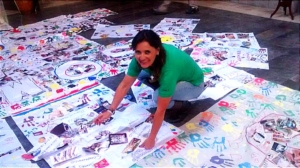 We received our first invitation in January 2015 to facilitate an intervention and conference about the experiences lived in Ecuador. A group of teachers living with the reality of the guerrilla activity that affected the country for many years, and the social impact this had on families and school structures, initiated a diploma course in the development of equipment and technologies with social implications. Well, there we were, our first extraordinary summit – full of feeling, so much to elaborate upon, so much to discover, so many dreams to bring to life and, above all, the possibility of designing possible solutions around their current reality. This journey was leading us to fulfil and live an appreciative transformation. So began our collective dreaming – the sum of this respectful group of souls, outstanding professionals from different countries: Argentina, Columbia, Ecuador and Mexico, including Andrea Torrecilla, Rosalinda Malagón, Mauricio Merino and María José Barona.
We received our first invitation in January 2015 to facilitate an intervention and conference about the experiences lived in Ecuador. A group of teachers living with the reality of the guerrilla activity that affected the country for many years, and the social impact this had on families and school structures, initiated a diploma course in the development of equipment and technologies with social implications. Well, there we were, our first extraordinary summit – full of feeling, so much to elaborate upon, so much to discover, so many dreams to bring to life and, above all, the possibility of designing possible solutions around their current reality. This journey was leading us to fulfil and live an appreciative transformation. So began our collective dreaming – the sum of this respectful group of souls, outstanding professionals from different countries: Argentina, Columbia, Ecuador and Mexico, including Andrea Torrecilla, Rosalinda Malagón, Mauricio Merino and María José Barona.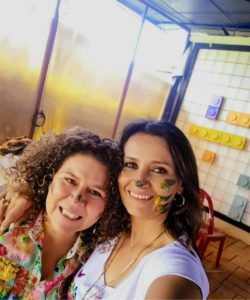 Thus began the transformation of how I viewed myself and my immediate environment – and the world. Everything makes sense in its totality, in the appreciative, in listening to my voice, to the voices of all, to co-build from the foundations we discover in ourselves, in dreaming ourselves, designing ourselves, and in living that transformation by choosing appreciatively.
Thus began the transformation of how I viewed myself and my immediate environment – and the world. Everything makes sense in its totality, in the appreciative, in listening to my voice, to the voices of all, to co-build from the foundations we discover in ourselves, in dreaming ourselves, designing ourselves, and in living that transformation by choosing appreciatively.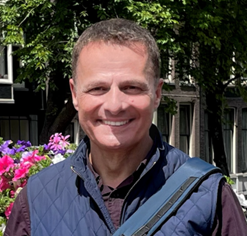
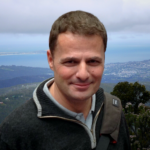
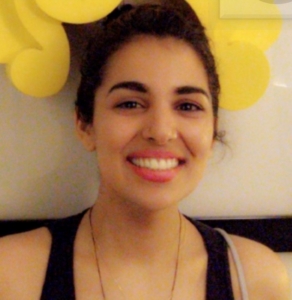 Rosemary has worked as a community development officer for the City of Toronto since 2003. Since her first exposure to Appreciative Inquiry during a conference in Washington, D.C. she has used it as a facilitative approach integrating it into her community development work. Along with appreciative practice, she also uses asset-based, strength-based, solution-focused and anti-oppressive practices.
Rosemary has worked as a community development officer for the City of Toronto since 2003. Since her first exposure to Appreciative Inquiry during a conference in Washington, D.C. she has used it as a facilitative approach integrating it into her community development work. Along with appreciative practice, she also uses asset-based, strength-based, solution-focused and anti-oppressive practices.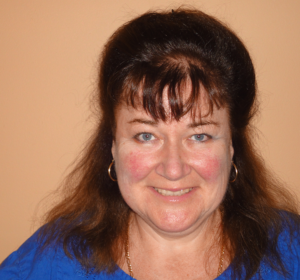 From September 2017 to April 2018, Amanjot worked alongside Rosemary Bell in a variety of community-based initiatives including co-creating and co-facilitating placement student workshops while working towards her Masters’ in Social Work. Appreciative Inquiry (AI) has assisted her in developing questions and evaluation sheets and by using the concepts within research. As a newly exposed user of AI she hopes to learn more and integrate AI approaches to evaluation, outcomes and non-profit management.
From September 2017 to April 2018, Amanjot worked alongside Rosemary Bell in a variety of community-based initiatives including co-creating and co-facilitating placement student workshops while working towards her Masters’ in Social Work. Appreciative Inquiry (AI) has assisted her in developing questions and evaluation sheets and by using the concepts within research. As a newly exposed user of AI she hopes to learn more and integrate AI approaches to evaluation, outcomes and non-profit management.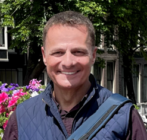 Keith Storace | Australia
Keith Storace | Australia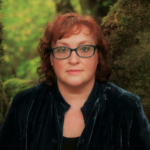
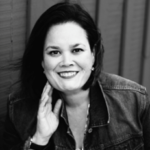


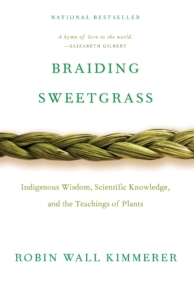 Braiding Sweetgrass
Braiding Sweetgrass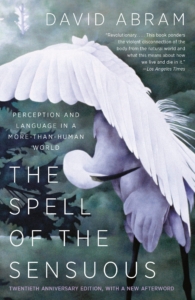 The Spell of the Sensuous: Perception and Language in a More- Than-Human World
The Spell of the Sensuous: Perception and Language in a More- Than-Human World